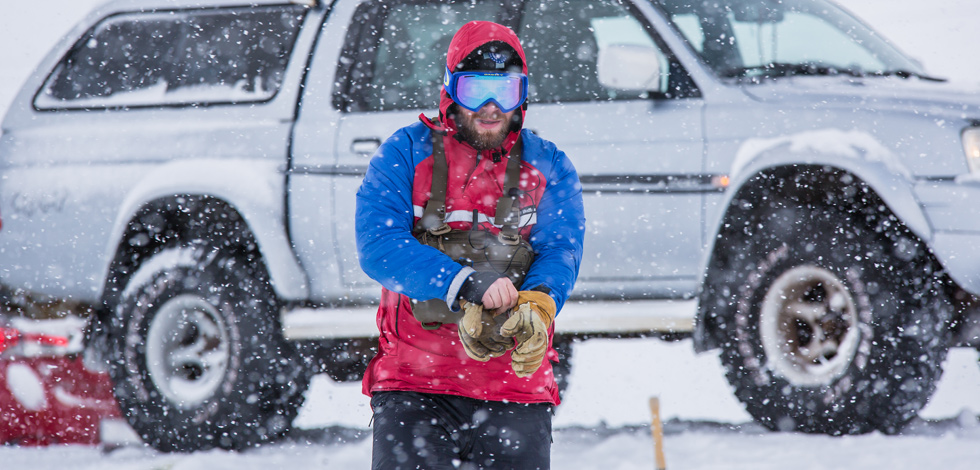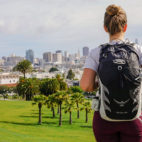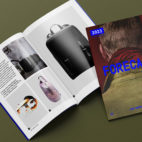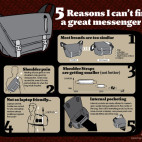Essential Outdoor Gear, According to Search and Rescue Operatives
There’s an undeniable thrill that comes with packing a bag and heading out into the wild to face the elements. The hills, forests and rivers are awesome, but they’re also dangerous – getting lost, injured, or caught in bad conditions can lead to some serious trouble. Fortunately for us, Search and Rescue (SAR) teams exist across the world, helping adventurers who may have drifted a little too far off the beaten path.
Usually volunteers, SAR members need the ability to go anywhere in their range, and carry someone back with them. Their position means their equipment absolutely has to work for them, since it might actually be a matter of life and death.
We spoke to four Search and Rescue operatives about the challenges they face, their teams, and the essential gear they carry with them.
John Schumaci, Sam’s Point Search and Rescue, New York
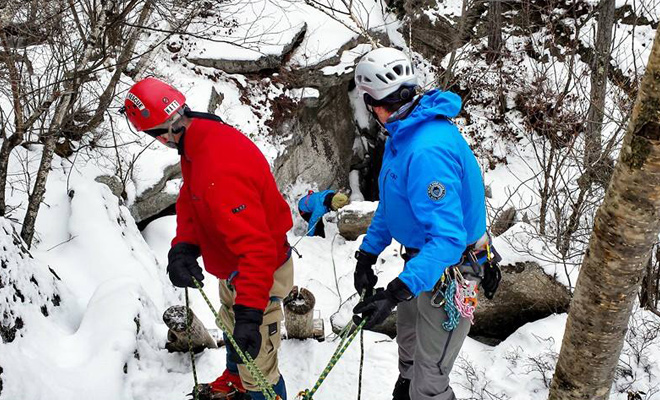
Area:
Our primary area is around the Shawangunk Mountains and Catskill mountains. However our team is a member of the NYS Federation of SAR teams so we can and do operate throughout the state, limited by travel time.
Challenges our team can face range from dealing with the several hundred foot tall cliffs to crevices just as deep, and caves too. Some crevices ice over in winter and create very dangerous scenarios. Also our temperature ranges from 100f in summer to 0 in winter.
The Team:
Each member is responsible for carrying their own personal protection equipment including clothing, helmets, headlamps, backpacks, first aid kit, etc. Additional technical equipment is purchased and owned privately by members who are trained to use such equipment. However, the agencies we work through and with have technical equipment that we can use. The initial purchase of necessary gear is indeed a major expense for new members, however many new prospective members are already involved either recreationally or professionally in outdoor activities and already have some of the gear.
Our team is a nonprofit 501c3 organization that raises money to purchase team equipment like a SKED patient packaging system, as well as smaller personal gear like hand warmers and first aid type stuff. We also receive donations.
Gear:
The equipment used in SAR must be very rugged. We are often pushing through very punishing terrain that can be abusive on gear. This is where some recreational gear will fail. It is a very important balance, though, to have equipment that can take abuse but also keep the weight down. The local cliffs, crevices, and caves which are the attraction to everyone around all create situations where ropes and technical equipment are needed to safely facilitate a rescue. This could be assisting the patient carry crew with a belay on low angle terrain or full on using the equipment to access places like caves and crevices where people unfortunately sometimes fall.
A piece of equipment that is very useful to me would be the “Aztek” kit. This consists of a length of lightweight rope with a personal restraint system on one end and a haul system on the other. The length of the rope is kept in a small fanny pack that can quickly be deployed. It can be used as a personal restraint line for work around edges and also progress capture haul systems.
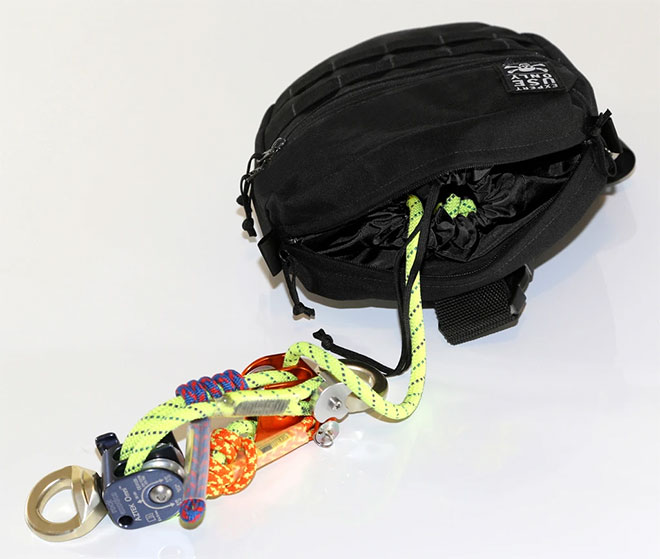
Some team members have begun using newer GPS apps on their phone to supplement standalone GPS units, with success. However, we do not rely on the phones. Phones have also changed the way searches are done as many times we are able to get a location ping of the patient’s phone through 911 as well as talk to the patient directly.
I have been using the Garmin 60csx handheld GPS for many years now. The 60 series is the industry standard and is reliable and accurate. Other members use other brands and models but most have the same functions. These units are very important to us for verifying coordinates, logging tracks, and marking waypoints during searches. We are all trained in map and compass use for land navigation, but these GPS units give us that level of redundancy and accuracy that is needed.
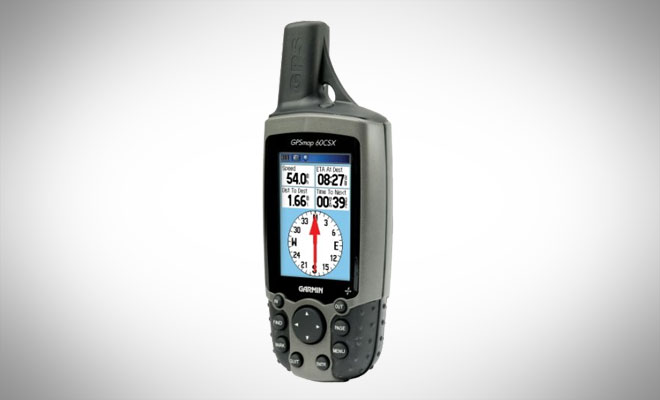
My current go-to and favorite pack is a Triple Aught Design Spectre 46L which is made from a super tough and water-resistant, yet lightweight, sailcloth material. It’s designed more like a typical mountaineering pack that is top loading with a front center zipper and full suspension.
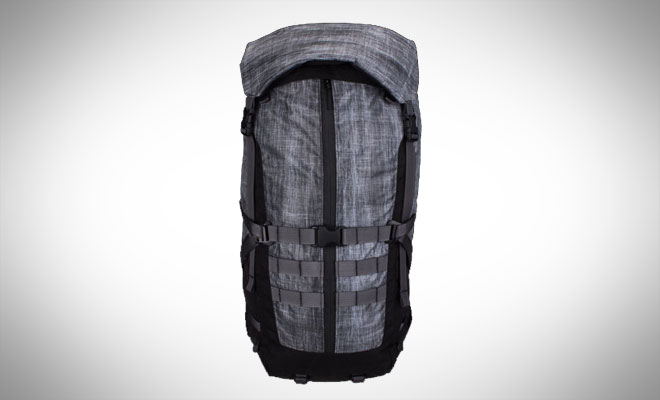
Dave Fenton, Southland LandSAR, New Zealand.
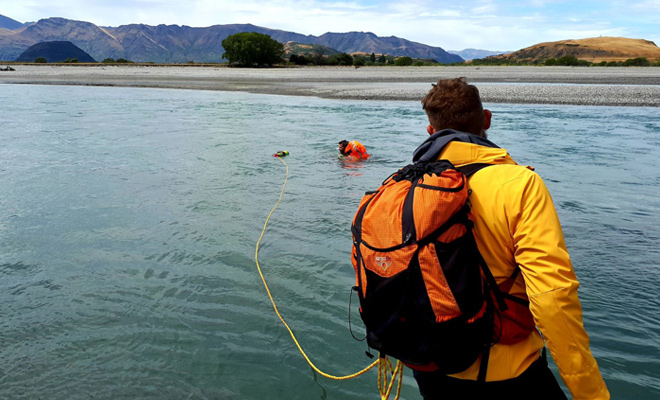
Area
Our group has a wide range, crossing into other sections as searches scale up. We cover all land and coastal searches around the southland region. Our terrain varies from urban and rural, through to heavy bush and alpine tussock country. Being at the southern end of an isolated island in the Pacific gives us an incredible variety of weather: we will get sunburnt, and potentially hypothermic within the same tasking. You never know if your access is going to be by truck, helicopter, or boat. You may have a nice warm ride, or you may be sitting two hours in the wind and wet. The variety and scale of terrain is incredible. As a result the need for warm clothing and spare layers is very high, as well as plenty of food intake.
The Team
We do have a store of branch gear that is available to be borrowed by members on exercises and operations. It is expected that you supply your own equipment for your personal needs. The general picture of a LandSAR member is that of someone active and engaged in the outdoors, and therefore the standard of personal gear is fairly sound.
There is a base expectation for equipment, in that each member turns out with a minimum of a 12-hour kit. There is no formal standard, but each member should be equipped to operate independently for the duration of the tasking, and carry contingency gear in case the extraction is delayed overnight. The personal cost to members is not great: the fact that personal gear is used means that they are just using their current tramping equipment. The only cost there is the amount of wear sustained through some of the harder searches in rough scrub.
The team is also sponsored by a range of national and local organizations, providing discounts for members and allowing avenues for group buying.
Gear
The basic needs for our gear are the same as the recreational sector, but the level of performance is increased due to the duration, and requirement to work as the weather worsens (whereas in recreational situations you can seek shelter and easy terrain). We always pack assuming we will have to jump into a river or crawl through gorse: it’s crucial to keep the important things waterproof and be prepared to be wet and cold.
There have been real advances in the weight and size of good insulation and warm gear. The technical fleeces and synthetic insulated clothing that is available has reduced load, and dramatically improved comfort. A Marmot windshirt and Macpac Primaloft insulated jacket have replaced my big down ‘puffers’ and the most notable layer change would be my Macpac Pisa – a light windproof and water-resistant jacket with Polartec Alpha Direct insulation. It packs down small, is crazy light, and absolutely smashes a fleece in weight, warmth and drying ability.
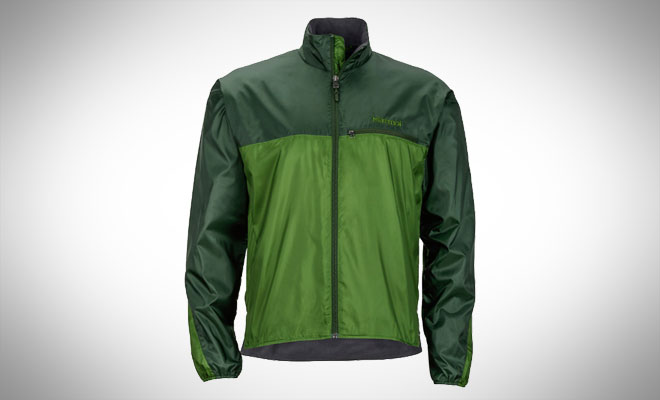
I use my Eberlestock Warhammer, with a decent drybag in the load bay – the unpredictability and nature of SAR work calls for the 30-50L range, and the Warhammer can be cinched down to a 30ish-liter pack, or blow out to over 100 if you stuff the load bay right. I’m eyeing a Kifaru at the moment, but struggling to justify the cost to get one to NZ.
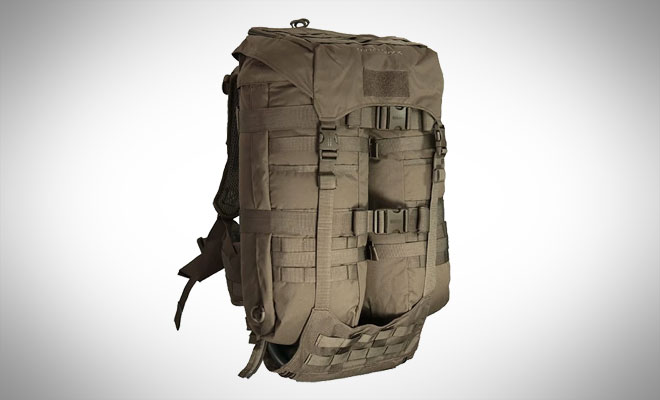
For drybags, I have used a few, with varying success. Macpac lightweight ones handle all my ‘pods’ of gear within a bigger Kathmandu bag (60L). It’s far from extreme gear, but the burly Kathmandu bag has lasted me around 5 years, and not let me down badly yet.
Andri Már Númason, ICE-SAR, (Slysavarnafélagið Landsbjörg) Iceland.
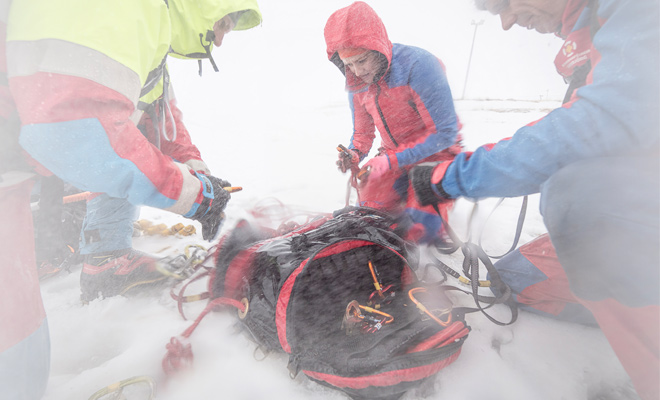
Area
I live in the south part of Iceland so that is my team’s main operational area, but we travel to other parts if extra help is needed. Weather in Iceland can change dramatically in a short period of time, it can go from sunny summer weather to a storm in a few hours. It’s often really windy here and so wind chill can be a major factor while doing outdoor activities: dressing appropriately is vital. Extra insulation and waterproof gear is seriously useful here.
The Team
For search and rescue, personal equipment (clothes, boots, backpacks, food) is mostly bought by the individuals themselves. That’s the stuff that you want to have when out in the wilderness to keep you happy and healthy. Buying personal equipment can be expensive at times but that varies between individuals; what one person wants and needs is not always what the next one does. We do have some minimum requirements, depending on the nature of the call-out. My personal preference is buying quality gear that works in various situations and will not let me down. The main focus should be knowing what you are using and how to use it properly – that goes for SAR work and recreational use.
Specialist equipment is usually team owned: vehicles, first aid, rigging. More recently, we’ve been using DJI drones as part of our search techniques and giving extra data to our incidents command. They definitely are limited to certain weather conditions but if the operator is good they can be useful in all kinds of situations. The most important thing, though, is common sense. Know where you are going, what the weather is doing, and check that you are properly equipped for your activities.
Gear
Having studied in the UK I use a lot of brands from there. Páramo for waterproofing and insulation and Buffalo Systems for insulation over winter. Both of these brands offer exceptional wicking properties and dry out quicker than any other items I’ve tried. They might be in line with being more of a softshell type of garment. I rarely use hardshells if I can help it as I run really hot and sweat a lot during activities so my main goal is always how fast my clothes dry and the breathability that they offer. In ICE-SAR we mostly use hardshells from Taiga in Sweden, Gore-Tex stuff, they are good.
I tried HPG kit bags after having used radio chest harnesses and wanted something similar for “normal” mountain activities. I use my kit bags for all kinds of activities, trail running, hiking, mountain biking. Just about whatever outdoor sport I find myself in and want a place to store my phone, headlamp, some snacks, and whatever I feel I need for that day. It’s a great way to keep the most used things and/or important items that I want close to me at all times. I’m the only person I know of in Iceland that knows of HPG so I’m probably the only one that uses them here.
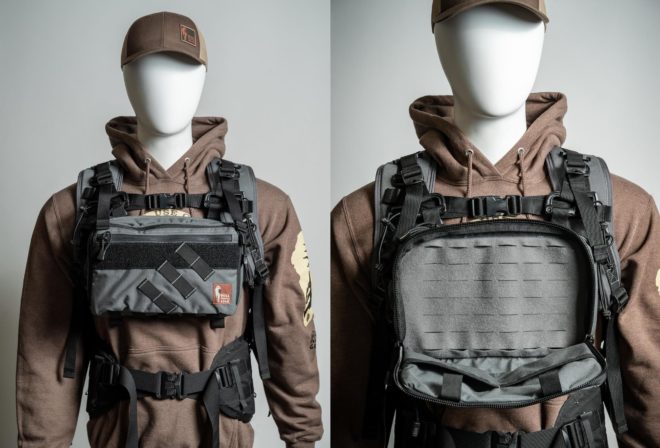
Kate Illman, Dartmoor Search & Rescue Team (Ashburton), United Kingdom
Area
Dartmoor, in southwest England, is roughly split into 4 quadrants, with each team covering a patch – ours is the south east but we also cover semi-rural and urban areas across the county, working with the police as needed. For visitors to Dartmoor, we recommend they always carry a torch, along with a map and compass (and know how to use it). The recommendation hasn’t changed even with new technology – which often fails. Most rectifiable mistakes on the moor are down to being lost, being benighted, or being unprepared for the weather.
The Team
Our members need to be totally self-reliant for a long period in very bad weather/at night and be able to assist others at any time, so we might carry more kit than usual. That can include a bigger personal first aid kit, a kisu shelter, spare maps, torches, hats…
Equipment is probably the largest expense (including vehicles) for the team. On joining the team, members are given a kit list of what they are likely to need in their rucksack and are expected to be self-sufficient for around 8 hours on the hill. We provide PPE to team members but this is limited by cost and personal choice – it includes a waterproof jacket and trousers, wicking t-shirts, helmet, torch and goggles, hi-vis jacket, other MR jackets – this is all branded. The team also provides all other operational kit – medical, rope, cas bags etc.
This is all maintained and checked by myself and specialist-skilled members.
We test kit for its durability and ease of use – complicated construction with cold fingers or exploding first aid kits are not helpful. New kit is often developed by the military but can be expensive and mainly black when it first hits the commercial market. It takes time for that to change – see Kendrick splints, haemostatic dressings, CAT tourniquet – much of our medical kit etc. has been developed by the military but we require it to be visible (i.e. not black!).
Gear
We currently issue Páramo Aspira jackets and trousers, which in our environment where there is a lot of gorse, are generally the preferred option. Other jackets we have, have been issued by MREW and are a Páramo Fuera and a Mountain Equipment Fitzroy. Our Páramo jackets are now around 8 years old so we are looking at new jackets and may include the ME Kongur in the mix but this is being discussed by team members at present.
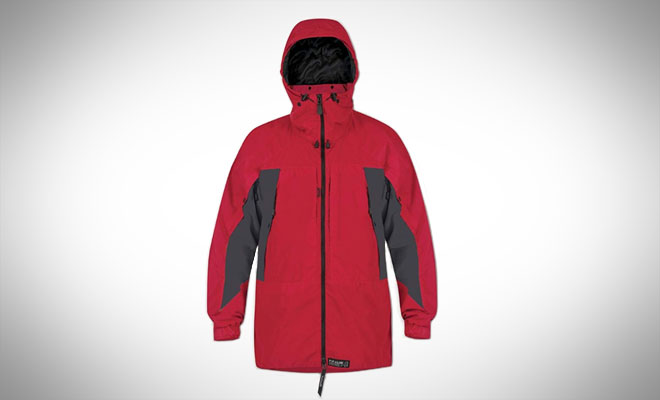
Team members all use their own preferred torches for backup head torches and search torches – these seem to be mainly from LED Lenser (P7/i7 is popular), Fenix or Petzl. We have issued a Petzl Alveo and Boreo helmet to all team members with a Petzl Pixa 3 torch. The torch can then be used interchangeably on our water helmets with the correct fitting mounted.
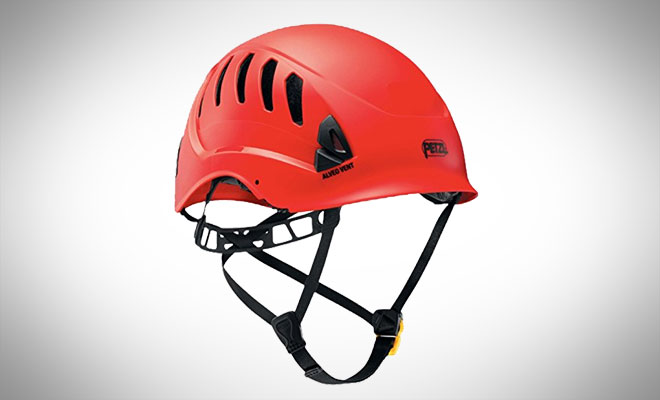
We use an emergency shelter on every call-out – we would rarely go out without one due to the risk of medical deterioration from hypothermia or general casualty comfort, particularly if needing to remove clothing. The search team carry an Aiguille 8-man shelter.
This article was written by Jed Edwards. Based in east Scotland, Jed’s spent as many nights camping in the highlands as he has crashing on sofas with crusty punk bands. Whether it’s full of hiking gear or science fiction paperbacks, he always has a bag on his back.
Responses have been edited for clarity.
Feature image by Rolando Diaz





 Carry Awards
Carry Awards Insights
Insights Liking
Liking Projects
Projects Interviews
Interviews
